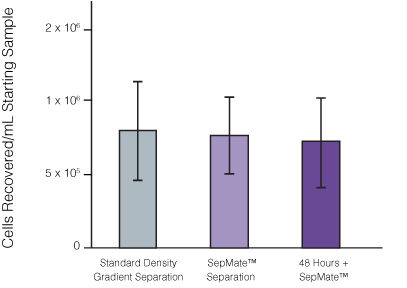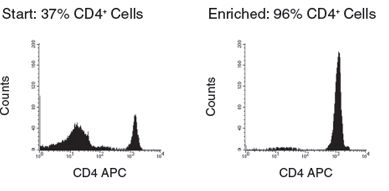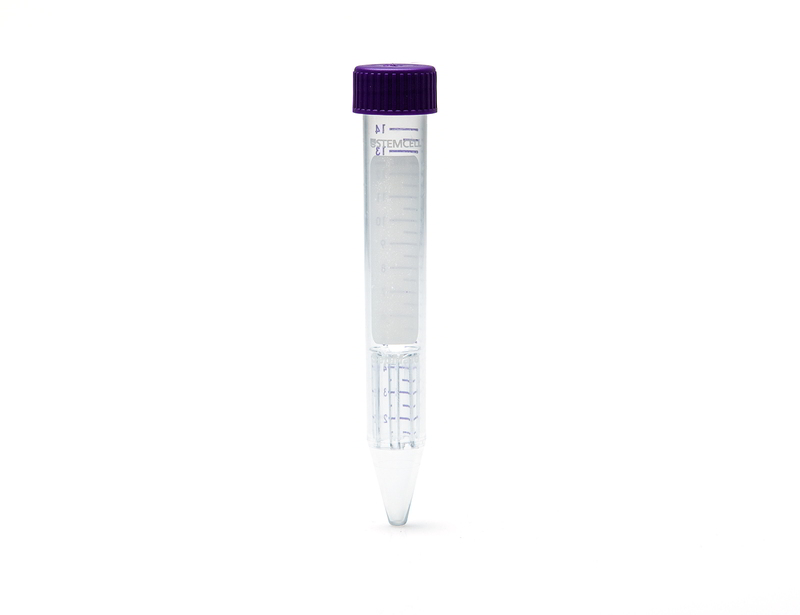概要
SepMate™-15 is designed for processing samples from 0.5 to 5 mL of sample.
SepMate™-15 (RUO) (Catalog #86415 and #86420) is manufactured under cGMP and is for Research Use Only. Users in Australia, Canada, Europe and USA, please refer to SepMate™-15 (IVD) (Catalog #85415 and #85420).
技术资料
| Document Type | 产品名称 | Catalog # | Lot # | 语言 |
|---|---|---|---|---|
| Product Information Sheet | SepMate™-15 (RUO) | 86415, 86420 | All | English |
数据及文献
Data

Figure 1. Recovery of mononuclear cells (MNCs) from peripheral blood using SepMate™-50 versus standard density gradient centrifiguation. Recovery of MNCs from fresh and 48-hour post blood draw enriched by density gradient centrifugation with SepMate™ (purple) or without (grey). There was no significant difference in the recovery of MNCS with and without SepMate™.

Figure 2. Human CD4+ T Cell Isolation using SepMate™-50 and RosetteSep™ Human CD4+ T Cell Enrichment Cocktail

 网站首页
网站首页



